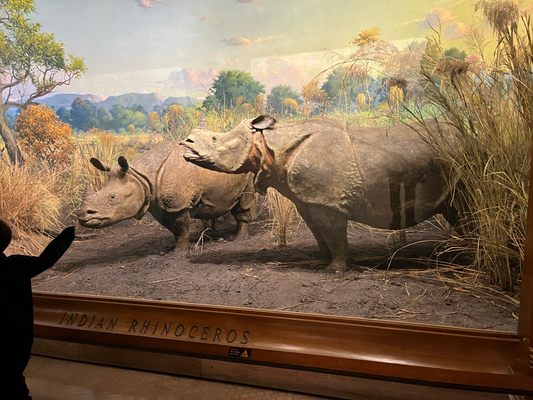About
These Indian rhinoceros, also known as the Greater one-horned rhinoceros may look like reconstructions of prehistoric beasts, but these are creatures that still inhabit our world. However, they are in danger of becoming a memory.
The Indian rhinoceros was once native to several countries that comprised the region known as the Indo-Gangetic plain. This included large swaths of India, Pakistan, Bangladesh, Nepal, Bhutan, and Burma. Today, however, the rhinoceros is endangered and has sadly become extinct across the majority of the regions it once roamed. This is largely due to habitat loss, historic overhunting by trophy hunters, and ongoing illegal poaching.
Nevertheless, these herbivorous heavyweights still survive in the wild in low numbers; roaming the riverside forests and marshlands of Northern India and Southern Nepal. There, they are protected by armed patrols of forest rangers dedicated to protecting the species from being hunted to extinction.
The long term future of the rhino, however, is still very precarious. Diseases spread by domestic livestock and natural disasters also pose a threat to populations. To complicate matters further, the national parks of India and Nepal are surrounded by dense human populations and agricultural lands. These conditions can result in human-wildlife conflict. When rhinos venture from the parks and graze on crops or wander through towns, they frequently become stressed and can be prone to attack.
This particular diorama was assembled, like the other displays of the Asian Hall of Mammals, in the late 1920s and viewable for the public in 1930. The pair of rhinoceros were collected by English explorers and naturalists, Arthur Vernay and John Faunthorpe on an expedition to Nepal much earlier in 1922. The scientists that formed the expedition team collected detailed notes on the flora of the habitat, which are reflected in the recreations exhibited in the rhino diorama.
Related Tags
Know Before You Go
The American Museum of Natural History (AMNH) is open from 10 a.m. to 5:45 p.m. every day. Entrance is free, but it is strongly recommended to contribute a small donation to the museum to help with its upkeep and outstanding scientific work. The Indian rhinoceros diorama can be found in the Hall of Asian Mammals, where there are many other incredible dioramas to view.
Published
September 11, 2019






















